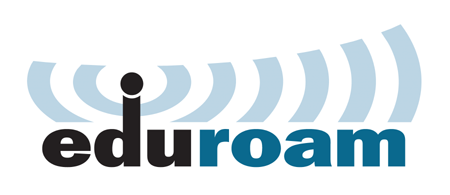The eduroam® secure worldwide roaming service is celebrating 1 BILLION authentications! Here we take a look at the idea-to-global service story.
How did it start?
Over 10 years ago, back in 2002 experts involved in the TERENA (now GÉANT) Task Force Mobility recognised the needs of the research and education community: students, teachers and researchers were getting increasingly mobile, and more dependent on technology and the Internet to collaborate and communicate. Thus the group started to design a roaming service, primarily for WI-FI users that would allow them to use the same credentials and WI-FI setup on their devices to authenticate and access the network regardless of the location, enabling the same Internet services as at their home organisation.
The initial requirements for such a roaming service were:
- identify users uniquely at the edge of the network
- enable guest usage
- scalable service
- local (home organisation) user administration and authentication
- easy to install and use
- at the most one-time installation by the user
- openness (not restricted to particular SW or HW vendor; using known standards)
After investigation of several different technologies and architectures (captive portals being one of them) one solution based on the use of 802.1x standards, RADIUS and EAP authentication was selected and named educational roaming – eduroam.
As usual, it all started with a simple e-mail proposal (https://www.terena.org/activities/tf-mobility/start-of-eduroam.pdf) sent by Klaas Wierenga of SURFnet (the Dutch NREN) to the group. The first eduroam cross-border infrastructure pilot along with SURFnet, included the University of Southampton in the UK, FCCN (the Portuguese NREN) and Srce, University Computing Centre, University of Zagreb in Croatia. The pilot was then joined by DFN (the German NREN), FUNET from Finland and other European countries in the following years.
Now we have a service!
Through the series of GÉANT projects (starting with GÉANT2) the eduroam architecture has been validated and perfected both in technical and organisational terms. Finally, under the motto “Open your laptop and be online” on September 1, 2008 the European eduroam service was launched as secure, consistent and uniform network access service inside the boundaries of the European eduroam confederation. At that time eduroam was already a global service provided in North America, Australia and Asia (Japan in particular).
With eduroam without the need to register for guest accounts or remember extra passwords, users can simply open their laptops or activate their mobile devices, and eduroam automatically authenticates them with their home institution and handles authorisation via the institution they are visiting. This not only benefits researchers, teachers and students, but reduces the support burden for institutions themselves, making it simple to provide access for all users (home and visiting) without adding to their administrative workload.
The fast uptake of the service in the coming years proved its’ potential. In 2012, 10 years after the initial proposal the service was offered at over 5,000 service locations in 43 European countries, and over 50 countries worldwide. The eduroam service was ranked as the 27th most widely used SSID (http://www.wigle.net/gps/gps/main/ssidstats).
Since the very beginning eduroam has been recognised as a highly distributed service. This fact emphasises the importance of supporting services such as documentation, configuration tools for end users, diagnostic, monitoring and metering tools.
Over time several supporting services were launched, starting with the www.eduroam.org website containing all the documentation both for end users and service administrators. Today they are all accessible via http://monitor.eduroam.org.
Finally the eduroam CAT (Configuration Assistance Tool) – an ultimate tool for end users has been launched (http://cat.eduroam.org). This tools makes the task of configuring your device for the eduroam service as easy as few clicks on your browser.
Going global
Soon after the official launch of eduroam in Europe, it became clear it could really become a global service so, under the auspices of TERENA (now GÉANT), the Global eduroam Governance Committee (GeGC) was established with the role of governing the global eduroam service.
Today eduroam is available on all continents in over 70 countries, at over 17,000 locations, still growing fast both in coverage and usage.
After being accepted by the research and education community as the de-facto standard for WI-FI and wired authenticated network access for campuses eduroam has gone beyond the campus border. Today it is offered as a service to the research and education community by local municipalities (for example Luxembourg, Vienna, Zagreb) and also in libraries, hospitals, and even on public transport.
It is also worthwhile mentioning that eduroam has been recognised by industry and society as a whole.
eduroam is now influencing vendors and standards bodies but also serves as an example to other sectors. We witness the birth of the govroam initiative aiming to build this service for government and local municipality environment based on eduroam technology.
More to come
This summer from July 12th 5,000 students from 45 European countries and 250 different universities will compete in 21 different sports as part of the European University Games (EUG 2016) hosted by the cities of Zagreb and Rijeka, Croatia. The organisers have decided to offer eduroam as the network access service for their competitors and guests!
Miroslav Milinovic
eduroam® is a registered trademark of GÉANT








Add Comment